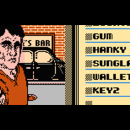Streets of Rage 3: The Underrated Gem of the Beat ‘Em Up Genre

Streets of Rage 3 is often considered the dark horse of the legendary beat ’em up series by Sega. Released in 1994 for the Sega Genesis, this third installment took the franchise’s iconic gameplay and cranked it up a notch with faster action, more complex storylines, and a higher difficulty level. While it didn’t receive the same widespread acclaim as its predecessors, Streets of Rage 3 has since been recognized as an ambitious and innovative entry that pushed the boundaries of the genre.
A Deeper, Darker Storyline
Streets of Rage 3 stands out for its more intricate plot, which delves into political corruption and robotics. The game continues the story of Axel, Blaze, and Skate, who are now joined by a new character, Dr. Zan, a former syndicate scientist turned good. Together, they must take down Mr. X and his crime syndicate, who have returned with a new plan involving robot clones to take over the city.
The narrative is more involved than in previous games, with multiple endings depending on your actions throughout the game. This added a layer of replayability and encouraged players to explore different pathways to uncover the complete story.
Gameplay Enhancements and Innovations
The core gameplay of Streets of Rage 3 remains true to its roots—classic side-scrolling beat ’em up action with fluid combat and satisfying combos. However, this installment introduced several enhancements that set it apart. Characters are more agile, with the ability to dash, roll, and perform special moves that consume a new energy bar, rather than health, making the combat feel more dynamic and responsive.
The difficulty level in Streets of Rage 3 is notably higher than in previous games, which has been both praised and criticized. For some, this made the game more rewarding, offering a real challenge to beat ’em up veterans. However, the Western release was significantly harder than the original Japanese version, Bare Knuckle III, leading to frustration for some players.
Graphics and Sound
Visually, Streets of Rage 3 maintains the vibrant and detailed sprite work that the series is known for, with more fluid animations and a darker, more mature color palette that matches the game’s tone. The environments are varied and engaging, from neon-lit city streets to industrial complexes, each filled with interactive elements and hazards that keep the gameplay fresh.
The soundtrack, composed by Yuzo Koshiro and Motohiro Kawashima, took a more experimental approach compared to the iconic beats of the earlier games. While the music in Streets of Rage 3 is more divisive, with its heavy use of techno and electronic sounds, it perfectly complements the game’s intense and gritty atmosphere.
Legacy and Reception
At the time of its release, Streets of Rage 3 received mixed reviews, primarily due to its punishing difficulty and the changes made to the Western version, such as censorship and character alterations. However, over time, the game has gained a cult following among fans who appreciate its ambitious design and challenging gameplay.
Today, Streets of Rage 3 is regarded as an underrated classic that deserves recognition alongside its more famous predecessors. It’s a game that pushed the boundaries of the beat ’em up genre, offering a deeper story, more complex mechanics, and a darker tone that set it apart from the rest of the series.
Conclusion
If you’re a fan of retro gaming or beat ’em ups in general, Streets of Rage 3 is a must-play title that offers a challenging and rewarding experience. It may not have achieved the same level of fame as the first two games in the series, but it remains a testament to Sega’s willingness to innovate and take risks. Whether you’re revisiting it or playing it for the first time, Streets of Rage 3 is a gem worth exploring.








